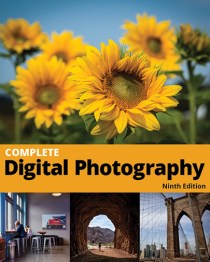
Autumn—one of my favorite times of year—is coming on quickly here in eastern Oregon: The nights are cooler, and each morning, the air has a hint of crispness in it. As a photographer, this change in the weather brings with it the anticipation of fall foliage, and I find myself itching to head out to shoot. I have been scoping out locations, planning my time, looking for the peak windows, and getting my gear ready. I have also been chatting with Ben Long and Hudson Henry about the best approaches for capturing fall color. Among us, we have a few tips for getting the most out of your fall-foliage shots.
Hudson: Let light dictate your scene
Hudson has found himself in some amazing places during autumn, but he also finds inspiration in his home area of Portland, Oregon. Here are a few of his tips for getting the most out of fall color:
- When I photograph fall colors, I let the light dictate my subject choice and composition. Overcast days are wonderful to work with fall color. Under clouds or fog I can shoot in deep colorful woods without the pesky highlights and shadows that get in the way on blue sky days. Just be sure to keep that dull grey sky out of the frame.
- Puffy white clouds with blue between soften the highlights each time the sun passes behind a cloud, while allowing me to include the blue and white of the sky to offset the other fall colors I am photographing. On bright sunny days, I use a long lens to look for small details in shadows and reflections while avoiding any direct sunlight or sky in the frame.
- I rarely leave my polarizer behind, but I always want it for fall colors. Polarizers don’t just add contrast to the sky and help control reflections, they also make fall colors more intense. This is especially true in a misty, wet forest of color. The polarizer cuts through the wet shine on the leaves allowing me to capture more saturation.
- Finally, I’m not at all above carrying a particularly lovely leaf specimen to place in just the right spot in the frame. Props have been a part of photography since the dawn of the art, and if it helps me capture the image I’ve envisioned, then I’m all for it.



 I came across this fascinating story about photography, education, and place in The New York Times recently, entitled “
I came across this fascinating story about photography, education, and place in The New York Times recently, entitled “

